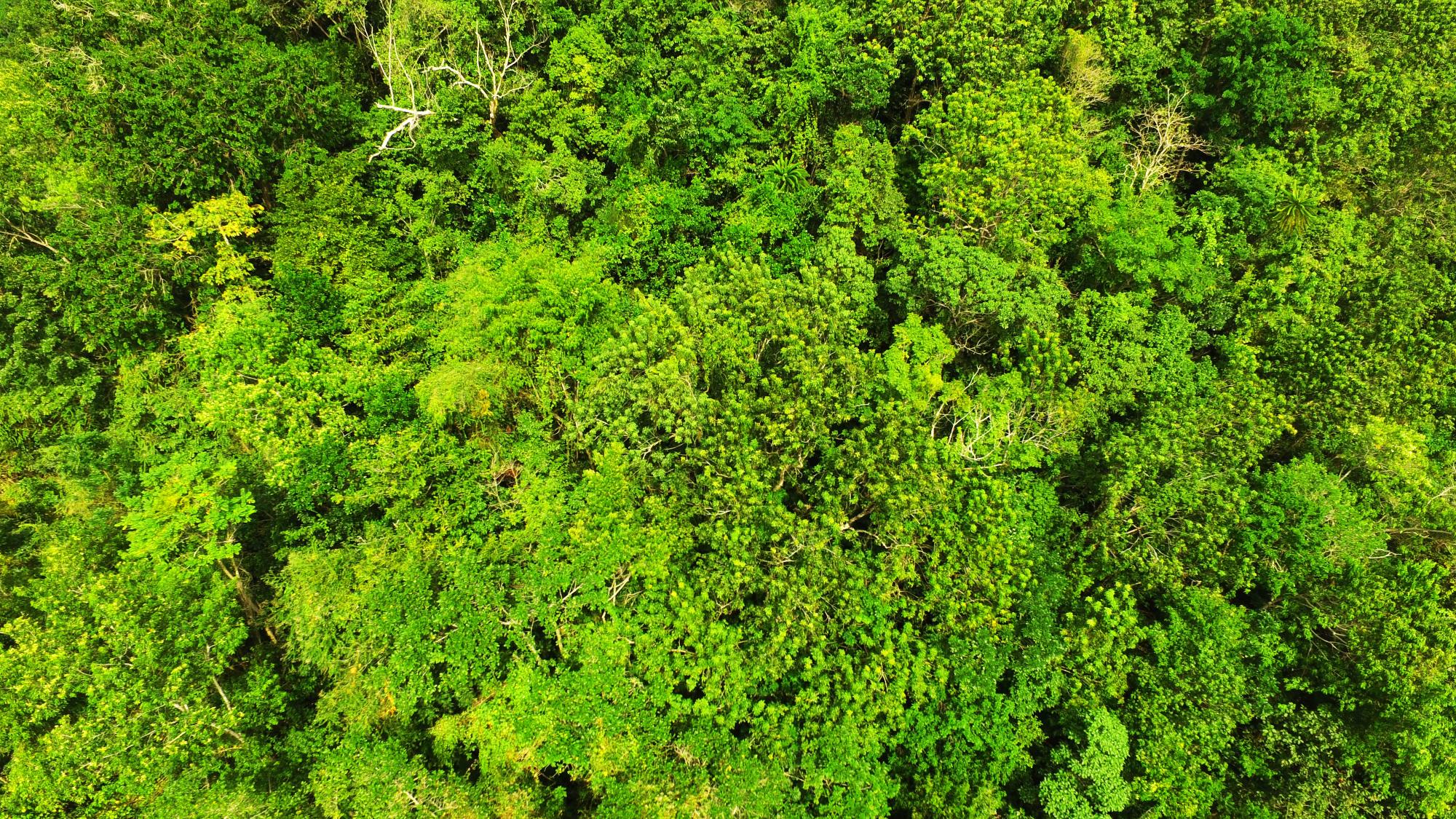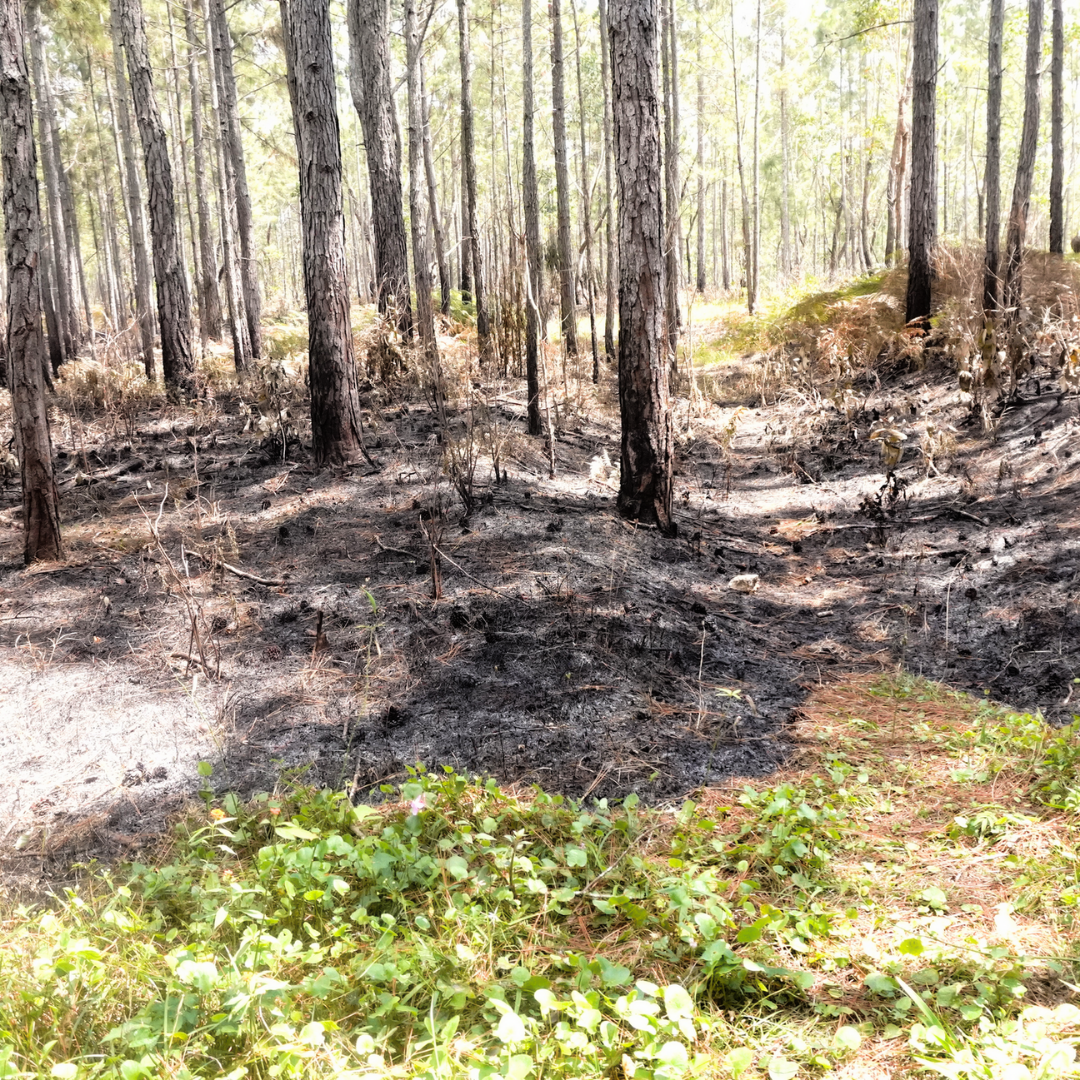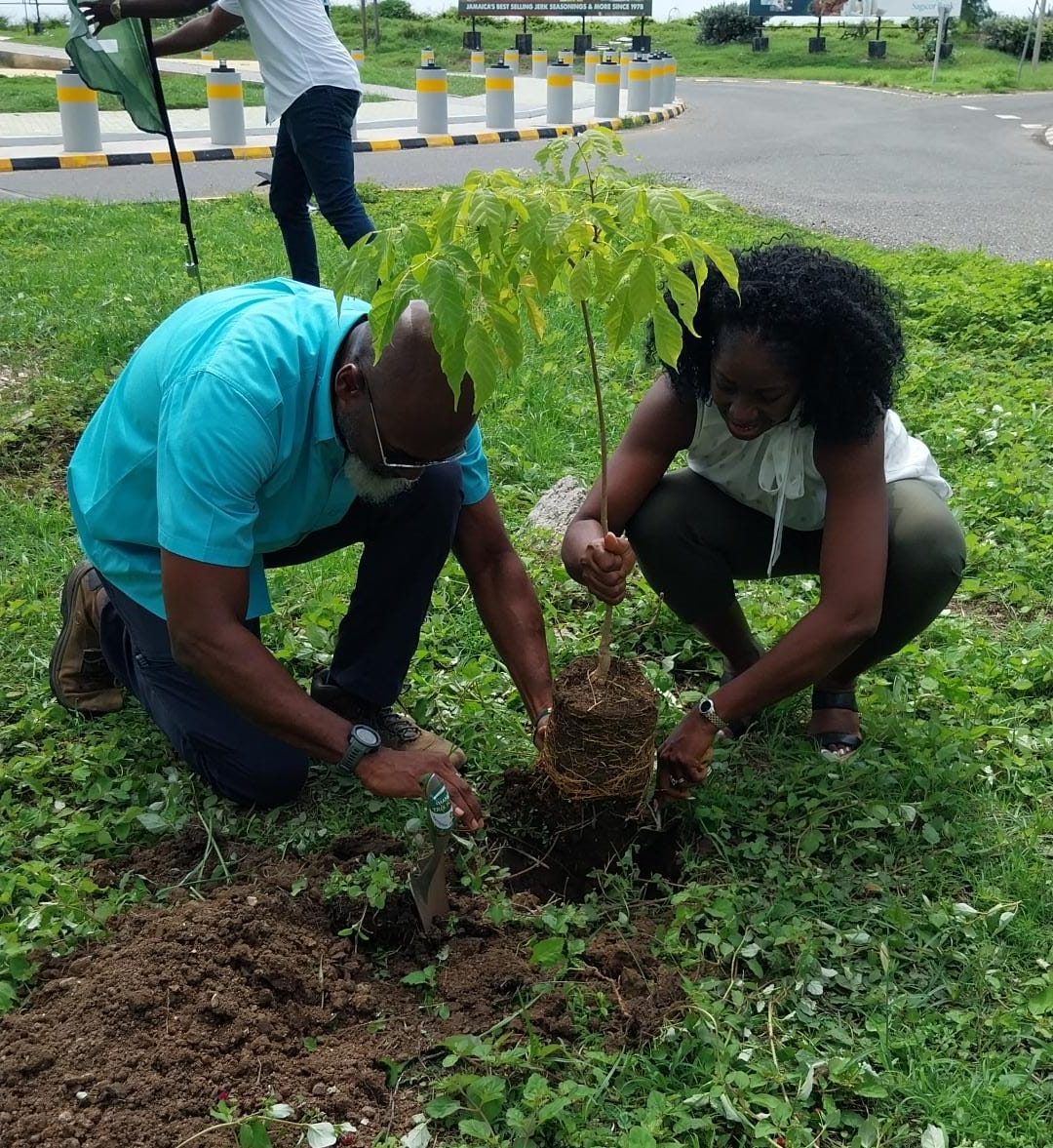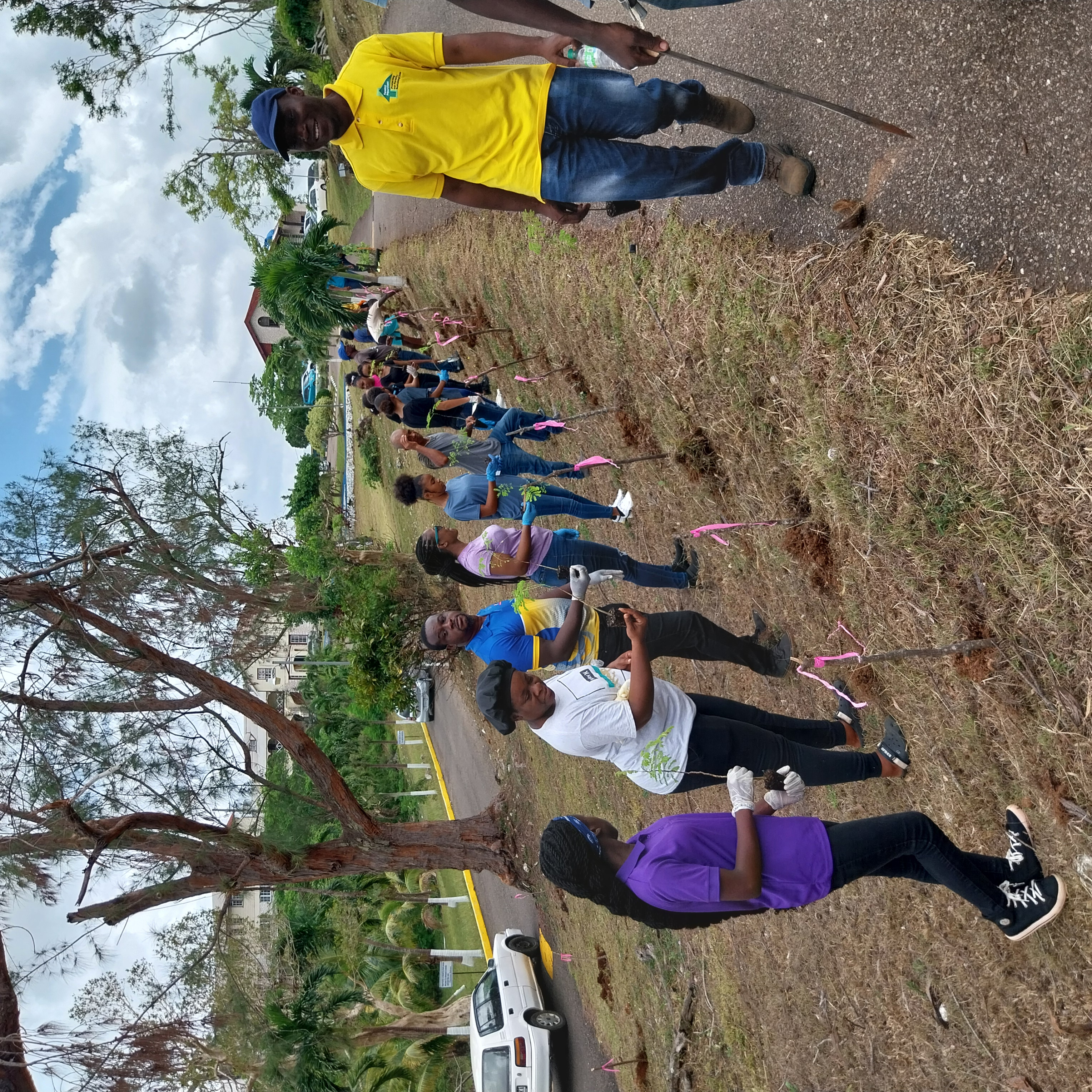Forest Trek trail devastated by Forest Fire
The Forestry Department’s annual hike, Forest Trek, returned on March 25th on a predominantly charred 10 km trail in the Bull Head Forest Reserve, Clarendon, Jamaica.
On March 3, just three weeks before the highly anticpated hike, the Agency was alerted to several blazes in sections of the Bull Head Forest Reserve, including the delineated hiking trail, which burned for almost a week until it extinguished naturally. Due to limited road access, the Jamaica Fire Brigade could not reach the affected areas to extinguish the fire.
An assessment by the the Agency’s Forest Operations Division revealed that the fire started at an adjacent private property and spread to the Reserve. “As a result of the fire, there was disruption in biodiversity due to loss of high-value native species”, said Damart Williams, Senior Director, Zonal Operations (Eastern). Approximately 40 hectares were burnt and over 3000 recently planted seedlings were ruined. Several tree species were destroyed in the forest fire, including Blue mahoe, Acacia Mangium, West Indian Cedar, Bitter Damsel, Wild Ackee and Fiddlewood.
The native species were among those planted in partnership with the Jamaica Public Service (JPS) under the Adopt-a-Hillside programme to improve biodiversity in the plantation forest where there is mostly Caribbean Pine. The massive forest fire transformed a forest of green to brown patches with oases of green in some parts. Revenue loss is estimated to be over half a million dollars.
Forest Trek, which commemorates International Day of Forests (March 21) annually, aims to increase publicawareness of forests across Jamaica and encourage greater appreciation for their various benefits. While this year’s theme, “Forests and Health”, seeks to remind the world of the connection between forests and people’s health, the recent forest fire in Bull
Head demonstrates how unsustainable agricultural practices among local populations sabotage forest ecosystems and by extension their health. Days after the fire, the air wreaked of smoke and burnt vegetation pointing to a temoporary decline in air quality in the area. Mr. Williams also commented that farmers reported loss of crops due to the fire. Damage to the reserve and private properties affected will take months to years to recover.
Jerome Smith, Principal Director, Forest Operations Division commented, “As part of the recovery process, the Agency plans to replant the area with native species, increase the implementation of fire retardation measures such as the establishment of firelines as well as heighten community sensitisation. These among other procedures will be put in place to aid regeneration”. Evidence of regeneration was observed along the trail which can be attributed to the incidences of rain days after the fire.
On the day of the hike, trekkers were exposed to the harsh impacts of fires on the forest. Storyboards were also installed along the trail to begin the sensitisation of citizens to the threat of fires to this Reserve and forests across the island. The unsightly damage was stark and it is hoped that the hikers developed a greater appreciation for the beauty and other benefits that healthy forests offer for day to day activities.







